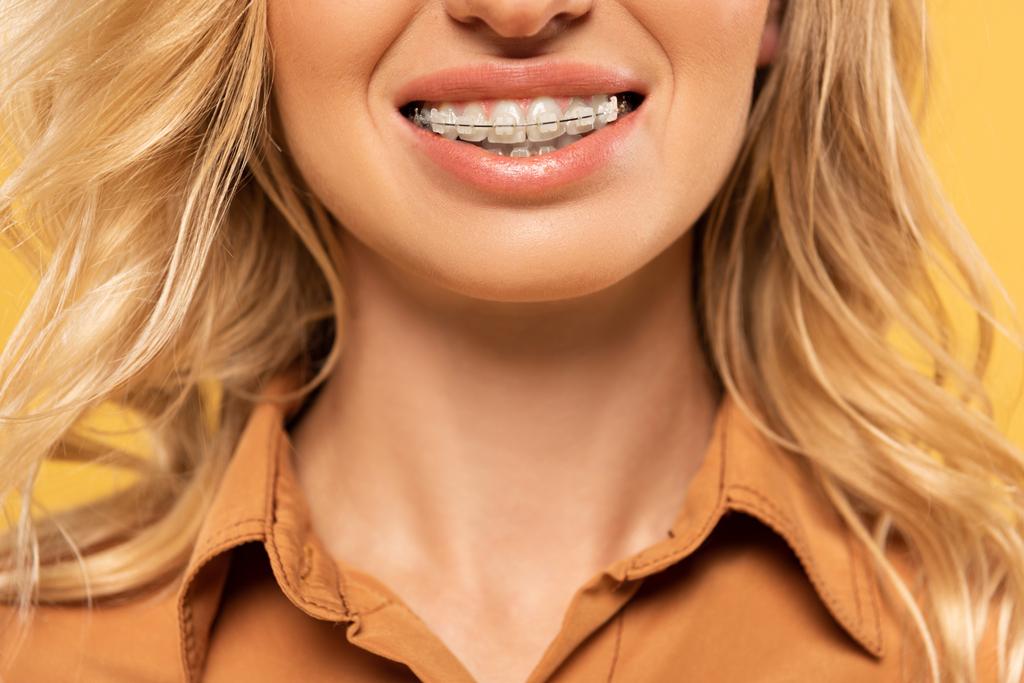Choosing to get braces can be a significant move to improving your health and enhancing your smile. Although braces are typically associated with teenagers, more adults are now opting for orthodontic treatment. Here’s what you need to know if you’re considering braces as an adult.
-
Reasons for Braces
Adults seek orthodontic treatment for various reasons, including:
- Misaligned Teeth: Crooked or overcrowded teeth can lead to oral hygiene challenges and increase the risk of cavities and gum disease.
- Bite Issues: Problems like overbite, underbite, or crossbite can cause jaw pain, uneven tooth wear, and difficulties in chewing and speaking.
- Aesthetic Improvements: Many adults want to improve their smile’s appearance, boosting their confidence and self-esteem.
Understanding the specific reasons why you need braces can help you set clear goals for your treatment.
-
Types of Braces

Several types of braces are available, and of course, each has its advantages and considerations:
- Traditional Metal Braces: These are the most common and effective type. They are more noticeable but also typically more affordable.
- Ceramic Braces: Made of clear or tooth-colored materials, ceramic braces are less visible than metal braces but can be more fragile.
- Lingual Braces: These braces are placed behind the teeth rather than on the front, so they are invisible from the front. They can be more uncomfortable to wear and challenging to clean.
- Invisalign: Clear, removable aligners are a popular choice for adults. They are nearly invisible and can be taken out for eating and cleaning, but they require strict discipline to wear for the recommended 22 hours a day.
Discussing these options with your orthodontist will help you choose the best fit for your lifestyle and treatment goals. You can look at our website for Beyond Braces, a professional orthodontist in Canada, to find out more about your options.
-
Treatment Duration
Orthodontic treatment for adults typically takes longer than for teenagers due to denser bone tissue and other factors. On average, treatment can last between 18 months to three years. Your orthodontist will provide a more specific timeline based on your individual needs and treatment plan.
-
Lifestyle Adjustments
Wearing braces as an adult requires some lifestyle adjustments:
- Diet: Certain foods can damage braces. Hard, sticky, or chewy foods (anything that could potentially break them) should be avoided. For Invisalign users, aligners must be removed before eating.
- Oral Hygiene: Excellent oral hygiene is crucial with braces. Braces provide additional nooks and crannies in the mouth where food particles and plaque can accumulate. Regular cleaning with brushes, floss, and interdental brushes or water flossers is essential to keep your teeth and gums healthy.
- Discomfort: Expect some discomfort, especially after adjustments. Over-the-counter pain relievers and orthodontic wax can help manage soreness and irritation.
-
Cost and Insurance
The cost of braces can vary widely based on the type of braces, the complexity of your case, and your location. Many dental insurance plans provide at least some coverage for orthodontic treatment, including for adults. It’s important to check with your insurer to understand your benefits and any out-of-pocket costs. Additionally, orthodontic practices often offer payment plans and financing options to help manage the expense.
-
Psychological Impact

Wearing braces can have a psychological impact. While some adults worry about the aesthetic aspects of braces, others find the prospect of a healthier, more attractive smile motivating. Supportive communities and social media groups for adults with braces can provide encouragement and advice throughout your treatment.
-
Choosing the Right Orthodontist
Selecting an experienced orthodontist is crucial for a successful outcome. Look for an orthodontist who has experience treating adults and offers various treatment options. Reading reviews, seeking recommendations, and scheduling consultations can help you make an informed choice.
Conclusion

Deciding to get braces as an adult is a significant commitment that can lead to lasting benefits for your dental health and overall confidence. Understanding the reasons for treatment, the types of braces available, the expected duration, lifestyle adjustments, costs, and psychological impacts can help you make an informed decision. By choosing the right
